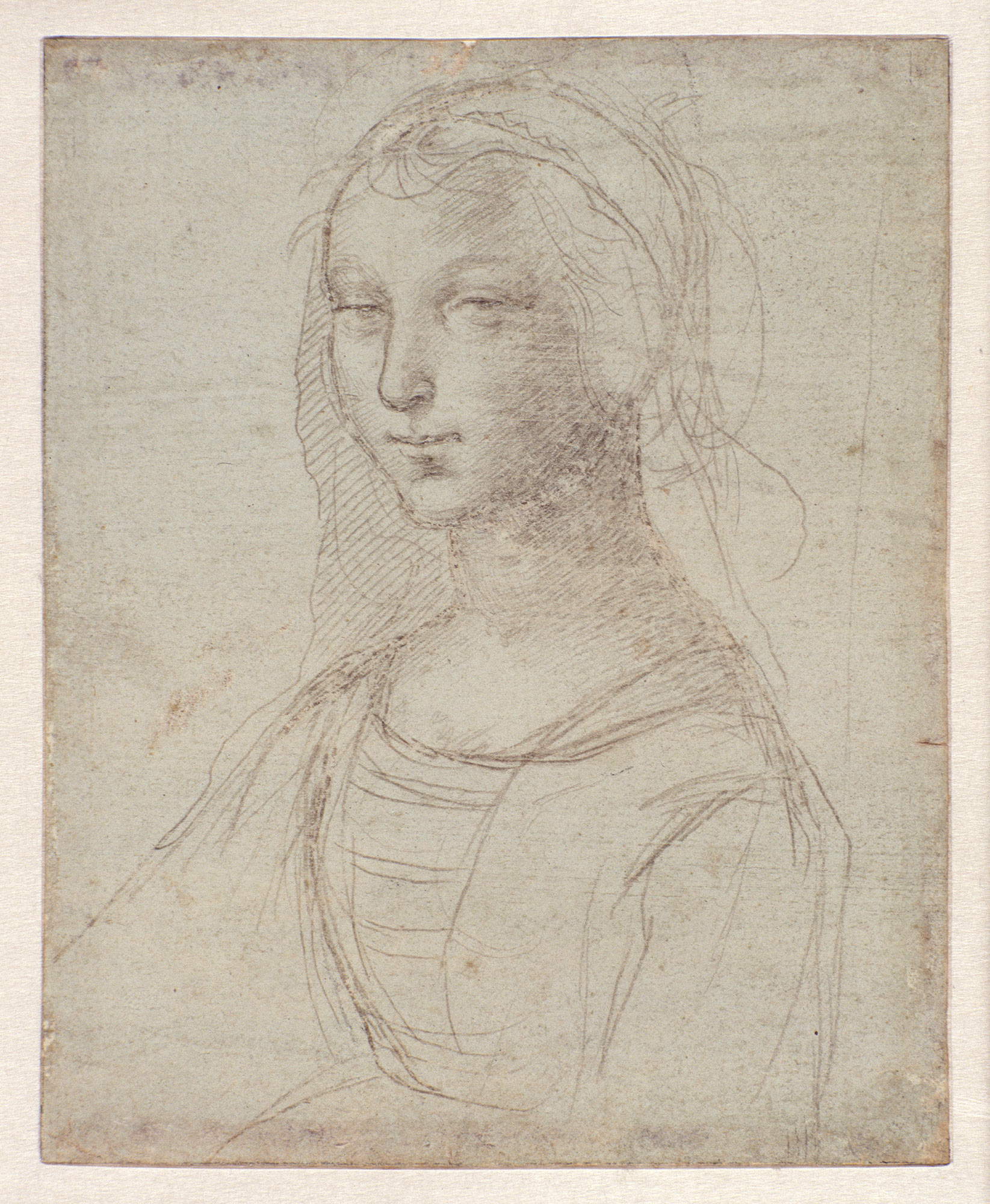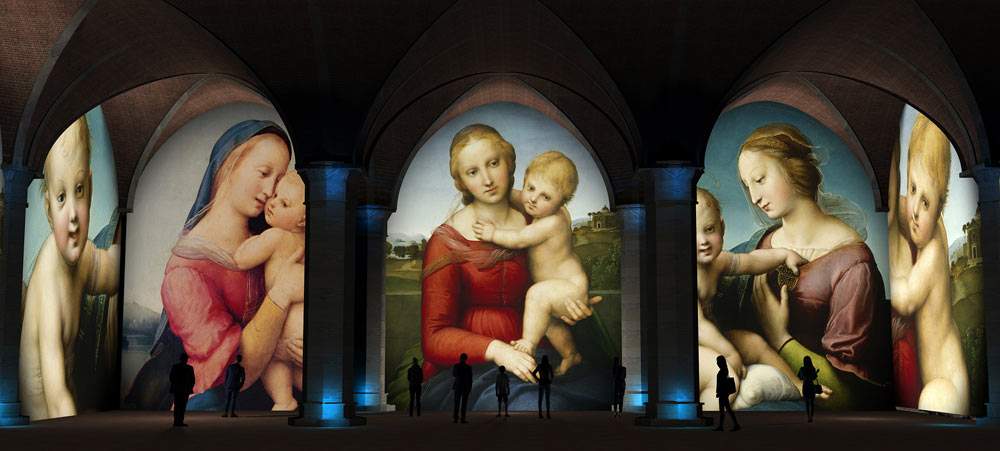Palazzo Vecchio in Florence is hosting, from October 31 to December 31, 2020, the exhibition Raffaello e Firenze (Raphael and Florence), an exhibition curated by Valentina Zucchi and Sergio Risaliti that is part of the celebrations of the 500th anniversary of the death of Raphael Sanzio (Urbino, 1483 - Rome, 1520). The exhibition is held in the Sala d’Arme of Palazzo Vecchio and aims to delve into the artist’s Florentine period, which began in late 1504 and early 1505, when Raphael moved to the Tuscan capital, and ended in 1508, when the artist left Florence to move to Rome. What had attracted Raphael to Tuscany was the fervid Florentine climate of the early 16th century.
In fact, Raphael arrived in Florence during years of great ferment for the city, setting himself the goal of completing his education and obtaining important commissions. During that period of about four years, the Urbinate entertained a fruitful dialogue with the artists of the time, including Fra Bartolomeo, Ridolfo del Ghirlandaio, Baccio d’Agnolo, Andrea Sansovino, the Sangallo, but especially with Leonardo and Michelangelo: an experience that paved the way for important changes in his style, conditioning the construction of the characters, the relationships between the figures, the representation of movement, and causing the artist to develop a greater attention to atmospheric and chromatic values. Contact with the Florentine milieu was also responsible for the maturation of a firmer and more synthetic compositional structure that interpenetrated with the descriptive and tactile language acquired in his formative years along with compositional harmony and luminous palette, achieving an extraordinary synthesis between ideal and real image. This was also acknowledged by Giorgio Vasari, who admitted, “nor will I keep silent that it was known, after he had been in Florence, that he varied and embellished the manner so much, by means of having seen many things and by the hands of excellent masters, that she had but to do some things with that first.”
The Raphael exhibition revolves around the Portrait of a Young Woman in Bust, a precious drawing now at the Palais des Beaux-Arts de Lille, dating from Raphael’s Florentine years and a glaring example of the intense dialogue he had with the great artists he met in the city, first and foremost Leonardo. This is an exceptional loan with which the City of Florence wishes to honor the genius of Raphael, recalling the artistic and cultural environment of the early 16th century, when Florence was the ’school of the world.’ Surrounding the work, projected on the walls of the Sala d’Arme, there will be a multimedia narrative that will make it possible to retrace the years that profoundly affected the Urbino artist’s training, introducing significant changes in his style. The immersive film is curated by Valentina Zucchi and Art Media Studio and illustrates the relational, political and social, as well as artistic, network woven by Raphael, recounting the events and showing the masterpieces of that period, such as the portraits of Agnolo Doni and Maddalena Strozzi and the Madonna of the Goldfinch, preserved in Florence at the Uffizi Galleries.
 |
| Raphael, Portrait of a Young Woman in Bust |
“This exhibition, between the real and the multimedia,” recalls Florence Mayor Dario Nardella, “reminds us precisely of the origins and transformations of Raphael’s art and of the great role of our city in his formation. Florence, at the close of the celebrations for the 500th anniversary of his death, explores this side of the figure of the artist and gives us a strongly evocative and evocative exhibition, made unique by the loan from France of a drawing dating back precisely to the Florentine years.” On the other hand, Culture Councillor Tommaso Sacchi affirms, “An exhibition that is already an event because thinking and realizing culture at a time of great criticality for the whole world is truly an exceptional effort. But we felt it was right not to overlook a formidable artist who drew inspiration and had the opportunity to refine his style precisely in our city. Palazzo Vecchio, then already a civic home, therefore returns to welcome him and to recall his Florentine years, in a mix of digital and real that will be able to bring new audiences closer and intrigue them.”
“The myth of Raphael has soon transcended history,” explains Valentina Zucchi, curator of the project and head of cultural mediation at MUS.E. “However, there is no doubt that his works give anyone who observes them, for five centuries, the high and pure vertigo of the encounter with art. The homage that the city of Florence dedicates to Raphael on the occasion of the five-hundredth anniversary of his death, referring particularly to the years when the artist settled in the city, stands as a valuable opportunity not only to enjoy the exquisite finesse of his drawings and the limpid quality of his paintings, but also to benefit, in this somber period, from the deepest and most authentic refreshment that culture can offer to each of us. As MUS.E we are once again pleased and honored to support the city administration in this task.”
“At such a dramatic and dark time, the star of Raphael shines,” says Sergio Risaliti, director of the Museo Novecento and co-curator of the exhibition. "The exhibition project adds a valuable cameo to the many events dedicated to the ’angelic butterfly,’ the artist who appeared as a divine being in his time. The drawing of a young maiden, turned three-quarter turn, on exceptional loan from the Lille Museum, is an absolute that shines with a special light in the Hall of Arms and contrasts feminine grace and venality with the cacophonous clamor of our time, wounded by atrocious events that add anguish to despair from an unprecedented health and economic crisis.The grace and beauty of this ’diamond’ seem to reassure us of the existence of in a better world, of perfect harmony, of which Raphael’s art is an accomplished prefiguration. In certain cases, the artistic event is as necessary as ever, even if it is ephemeral. We offer to the city and to Italy a small immense masterpiece of Raphael’s graphic art and a multimedia didactic project that illustrates with a monumental tone Raphael’s youth during the period spent in Florence, when the artist left Siena in 1504, where he was busy with Pinturicchio, to reach Piazza Signoria. Here Michelangelo’s David was already installed and the world at that time had changed speed. Upon arriving in the city Raphael had a kind of salutary shock and experienced an initiation into 15th-century public art, that of Donatello and Verrocchio, as well as the devotional art of Luca Della Robbia among others. Neo-Platonic humanism became familiar to him, and so did the philosophy of love and light according to the followers of Ficino and Plotinus. It was, for Perugino’s pupil, a decisive turning point. In Florence the foundations were laid for Sanzio’s most mature and immeasurable art, that which was to manifest itself in Rome. And here, at the ’school of the world’ he got to do his homework on Leonardo’s Battle of Anghiari and its shocking creations. Here he admired the great cartoon of the Battle of Cascina and assimilated perfectly the relationship between Buonarroti’s modern art and the ancient world, whose moral and aesthetic greatness Raphael himself resurrected in the more mature Renaissance. It is now worth recalling the studies carried out in the past decades by distinguished critics and art historians, including Mina Gregori, who was the creator, in 1984, of the great exhibition ’Raphael in Florence,’ at Palazzo Pitti, on the occasion of the celebrations for the five hundredth anniversary of his birth. An event that still serves as a point of reference as well as a turning point for demythologized knowledge of the artist."
The initiative will be accompanied by guided tours in the historic center, on the places related to the painter’s stay, defined in agreement with the World Heritage Office of the civic administration, always in complete safety: they will be held every Saturday and Sunday at 3 p.m., from Saturday, Nov. 7 until the end of December (reservations required at 055 2768224 or email info@muse.comune.fi.it). Thanks to the support of Unicoop Firenze, it will also be possible to enjoy a program of digital appointments dedicated to the artist and aimed at the general public, conducted by art historians and experts, with the aim of delving into individual aspects, works or themes of Raphael’s Florentine period. Finally, the exhibition will be accompanied by a catalog published by Edifir due out in November, edited by Valentina Zucchi and Sergio Risaliti, with contributions by Cristina Acidini and Vincenzo Farinella, among others.
 |
| Raphael and Florence: exhibition tracing the Florentine period in the Tuscan capital |
Warning: the translation into English of the original Italian article was created using automatic tools. We undertake to review all articles, but we do not guarantee the total absence of inaccuracies in the translation due to the program. You can find the original by clicking on the ITA button. If you find any mistake,please contact us.